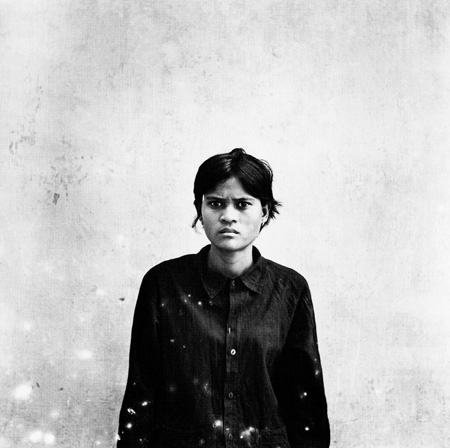While the massive flexibility of digital media has taken a sledgehammer to the 20th century's hierarchy of information control, a more subtle philosophical risk has appeared: we live in an era of ever-cheapening information and modes of "seeing". Our old tools for enriching our worldview -- including well-shot, exposed, framed and arranged photographs designed to be deeply considered -- are at an incrementally greater risk on the daily.

Consider South Africa: given the remarkable and unique power shift in the early1990s and the unimpeachable visage of a Nelson Mandela, mainstream world opinion went on autopilot for the rest of the decade and looked the other way as his successor Thabo Mbeki pushed an AIDS epidemic aside, claiming it was little more than a neocolonialist scare tactic. While the "Rainbow Nation" population was decimated, the rich-poor divide grew wider as oligarchs (both white and black) dominated Johannesburg business.
The idea is not to blame Mandela for being such an inspiring, heroic figure, but to stress the bottom line: icons matter. The world is an ever-more competitive market for myths, and perception is as important -- if not, in the case of societies rebuilding themselves, moreso -- as reality.
Cambodia poses a particularly paradoxical challenge, then; for a regime hellbent on eradicating modernity, the Khmer Rouge took special pains to archive and catalog their victims. Nhem En's roughly 6,000 portrait photographs taken in the Tuol Sleng/S-21 detention facility form, beyond a doubt, the strongest visual mark Cambodia has left on the world. Ever.
Each photograph reeks of death; En was given a few seconds with each prisoner to get their image down before their execution, and prepared the prints himself. On the one hand they serve as an invaluable document; on the other, they have solidified Cambodia's reputation for too long as a demolished country. Some hang in Western galleries, some are neatly tucked in the national archives. Commentators have never resolved to anyone's satisfaction whether En deserves to be locked up or honored for his role in the civil war.
This is where the Vanderbilt Republic Foundation comes in: compared to En's insurmountable records of "before", the "after" is anyone's guess. The ongoing national recovery is, for most, a mystery. Do the extreme circumstances prevent the photographs from forming a body of "work"? Can any Cambodian claim the luxury to refute -- rather than mourn -- the circumstances that brought the photos into being? Have any of Cambodia's post-civil war years yielded more powerful imagery? The notion of a national photographic morgue becoming the face of a country for decades is deeply macabre, but the realistic answer has to be no.
The flip question could be posited to the VRF creatives visiting Cambodia this fall: does helping an entire culture pick up where it left off constitute a "work" or "deed", with all those words' voluntary implications? Is it entirely accurate to discuss the VRF/CLA mission as anything less than an act of cultural humanitarianism, a kind of private-sector Marshall Plan?
The argument is strong. A burgeoning international interest in the war crimes tribunal of Kaing Guek Eav (aka Duch, who ran Tuol Sleng and other camps like personal fiefdoms) forces attention back to the photographs; En may have been the photographer, but this was Duch's - as well as Pol Pot's - work. As the masters of the traditional, existentially-threatened culture slip away, the project is less about "advocacy" and "human rights" and more about helping Cambodians set the record straight both for themselves and their global image. As CLA founder Arn Chorn-Pond says: "We do not want any more killing fields."
Only a globalized world could have produced the VRF's first mission, but in every Cambodian who takes advantage of new media tools to testify against the now 66-year-old Duch, we can see the country's growing rebirth of spirit. Rather than rejecting or wallowing in the legacy of Pol Pot and the Tuol Sleng photographs, the resilience of the Cambodian people has already guaranteed it: the VRF will arrive not as cultural interventionists, but as collaborators. Our timing might never be better.


No comments:
Post a Comment